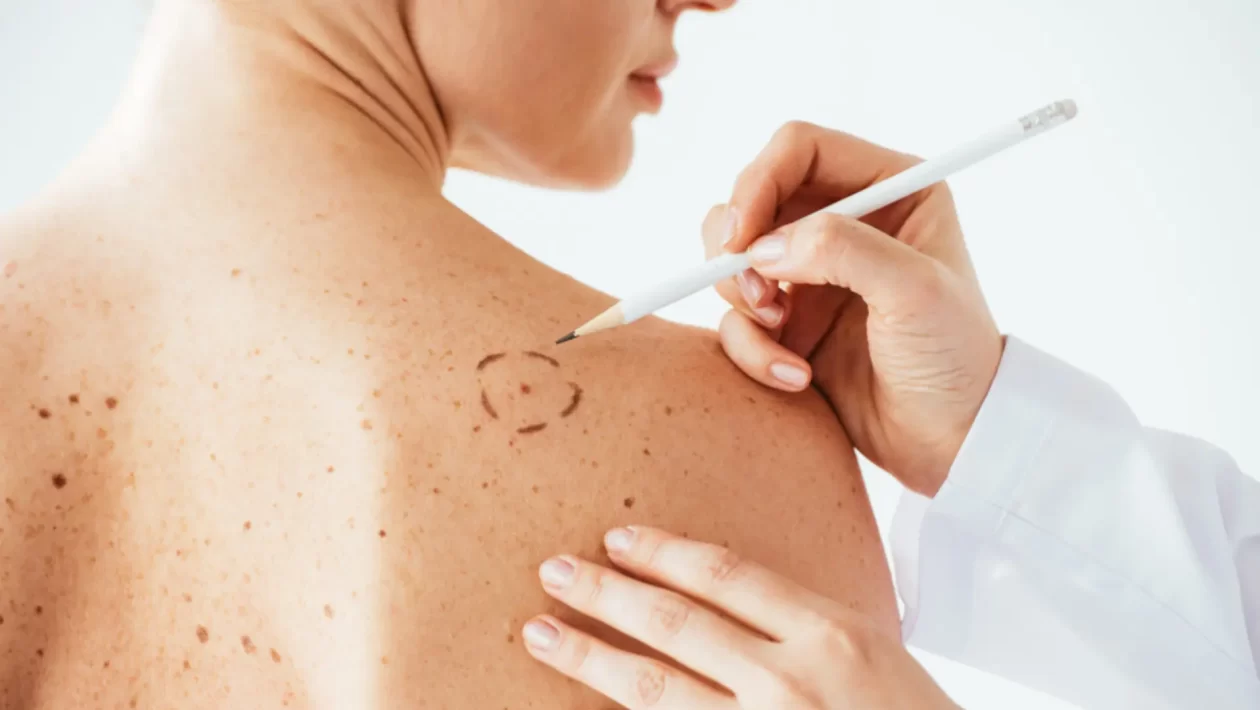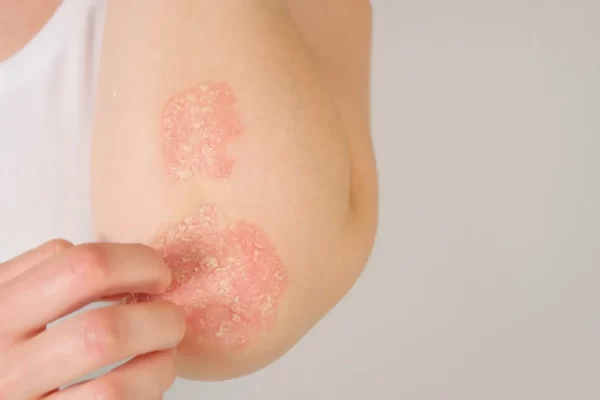Usually moles, blemishes and brown spots on the skin are not a major concern to stress over as almost all moles are harmless. At the same time, however, it is important to investigate any changes in the existing mole or spot such as in its colour, size or shape, and to keep an eye out for any new irruption on the skin. New or any atypical moles that appear out of nowhere might be an indication of melanoma and need to be checked by a specialist. Melanoma is a form of skin cancer which occurs due to the change and mutation of skin cells. The cells known as melanocytes produces melanin- the pigment that gives skin its colour. Developing the condition of melanoma is amongst the deadliest form of skin cancers.
The most common type of melanoma spreads across the surface of the skin. They mainly show themselves on areas that get bursts of intense sun exposure (UV radiation), though they have the ability to appear on any part of the skin including the eyes, soles, palms or even under fingernails. The physical apparition of melanoma is rare in people with darker skin. The danger of melanoma is expanding in people under the age of 40, especially found in women. In women, the cancerous moles tend to appear on legs, neck and face, and in men, they commonly affect the chest and back area.
Melanoma is usually treatable in most cases, with lab tests and imaging required for the diagnosis. The diagnosis and treatment involve biopsy of the skin. Surgery is also an option. If the melanoma is detected and treated early, it is mostly curable. However, if the symptoms spread across the body, it develops into a cancer that could be fatal and lead to death.
The ABCDE Examination
The most cautioning indication to detect melanoma is a growth of a new spot or changes in the existing moles, looking different from most spots/moles on your skin. The risk of developing the condition particularly increases in people with lighter skin, red or brown hair, history of sun exposure and hereditary causes. Detection of any sign or symptom that could elude to melanoma should be consulted with a dermatologist at the earliest.
The ‘ABCDE’ guideline is another helpful method to recognize suspect lesions. The method designates 5 signs to identify the moles that might indicate melanoma or other skin cancers:
A stands for Asymmetry. Look out for moles or similar markings with an asymmetrical shape, appearing rather different looking than others.
B stands for Border. The edges are irregular, poorly defined outline, ragged or blurred.
C stands for Colour. The colour of a melanoma mole varies from the regular moles or spots. They appear more uneven and darker in shade like brown, almost black and at times white or bluish.
D stands for Diameter. Diameter of more than 6 millimeters (size of pencil eraser) could be a sign of melanoma cancer.
E stands for Evolving. Moles that may change and look different over time, grow in size, or even itches or bleeds need to be immediately checked.
Other warning signs include a sore that won’t heal, raised or a bump on the mole, and spread of pigment into surrounding skin
The patient can take preventive measures on their part as well, by practicing simple habits like avoiding excessive UV exposure, wearing sunscreen with SPF above 30 all year around, staying away from artificial heat like lamps and tanning beds, and wearing protective clothing to avoid sunburn. As much as you would take care of your internal body, it is also important to give priority to your external body sometimes. Understand your skin better and recognize any subtle changes that might nod to something not so subtle.




